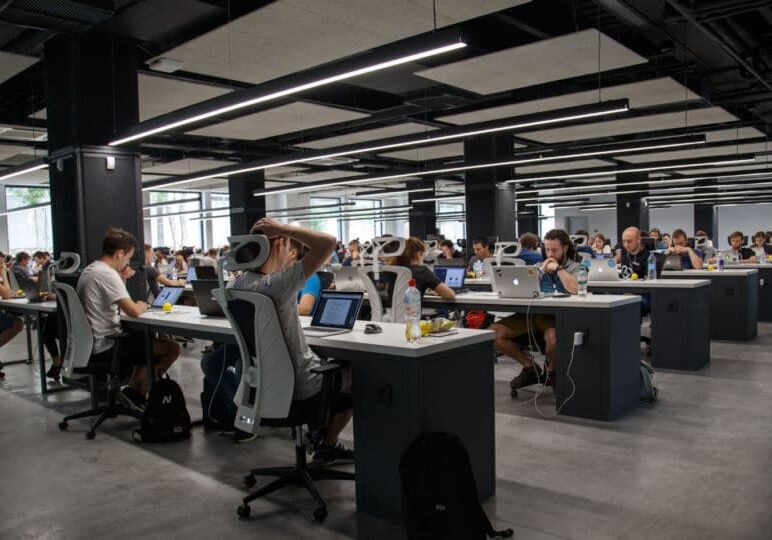Upskilling downstream: A look at the workforce of the future

Faced by a global humanitarian crisis and an unprecedented drop in fuel demand, the oil and gas workforce is facing more existential issues than working from home. It is estimated that approximately 400,000 oil and gas sector jobs were cut throughout the turbulent 2020.
The sector is grappling with new technologies, and old challenges. Asian Downstream Insights (ADI) looks at downstream diversity, post-pandemic progression and how tomorrow’s workforce will be shaped by the issues and changes that happen today.
Change drives us to be better
The pandemic-driven price collapse is not the first the oil and gas industry has seen, however this time, things are different. Instead of a lingering supply-and-demand imbalance, COVID-19 triggered a rapid shutdown of the global economy.
This short sharp shock may have cast a cloud over the short term future, with recovery by even the most optimistic predictions not expected till the end of this year. But forward-thinking downstream professionals are seeing the scope to survive stronger in the long-term.
“It is quite challenging”, admits Dinna Rizqi Awalia, Planning and Optimization Engineer at PT Chandra Asri Petrochemical Tbk. But for her, “change is undeniable in this stage and can be uncomfortable but… It pushes us to be better.”
Building a more agile workforce
One way in which it does this is through acceleration of digital adoption. A recent EY survey of global oil and gas executives cited “a major digital skills gap” among the oil and gas workforce as a key challenge of the new normal, with 92% recognising the ability to reskill for the digital age as “crucial”, and over half agreeing that current skills across AI and data science are “inadequate”.
Awalia takes a more positive view, based on proactivity.
“This [current pandemic] condition encouraged our team to be more agile, and utilise technology in a more creative way,” she describes. “On the operations side, it encouraged us to have better communication and improve the plant reliability.”
Upskilling can be an overlooked silver lining of the pandemic era, and as refineries re-align their infrastructure to the trials, tribulations and technologies of the next phase, the workforce too has the opportunity to adapt.
Driving downstream diversity
In this brave new world, some old challenges still exist. A 2019 report revealed that women’s representation on oil and gas companies’ boards was 14%. While this had doubled from a decade before, there is still progress to be made. Figures from last year reveal that although women make up 22% of the global oil and gas industry workforce, at senior level that figure drops to 17%, and just 1% of oil and gas CEOs are women.
The ADI network of Women in Oil and Gas leaders agree that strong female representation and mentorship from top down are crucial to inspire and motivate the next generation of female engineers. In today’s distributed workforce, such visibility can be challenging.
“I see my role as a female leader in a male-dominated industry to show other women that this is possible that you don’t have to abandon your beliefs, your way of living, your family,” says Carina Laidens, Plant Manager at Petrobras. “Now, this is more important than ever.”
While the pandemic has blurred the lines between professional and personal, it may also have opened our eyes to the challenges of juggling multiple priorities. And in a society where these challenges still disproportionately affect women, it is falling on organisations to step up, and make commitments to change. Across the oil and gas industry many major operators, including BP, Shell, Exxon and Worley have committed to diversity goals and created internal communities of support to help drive diversity through difficult times.
The business benefits of a diverse workforce are well-known. 94% of industry professionals in a recent survey believed that that diversity of thought and experience are key to navigating the industry’s high levels of disruption and companies with greater diversity at senior and board level tend to report higher levels of performance. And as offices slowly re-open and the workplace environment gets redefined, again, the majority of ADI interviewees have expressed the importance of community and culture in helping all employees adjust to this transition.
Next-generation workforce
The difficult times are far from over. It’s estimated that around 70% of jobs lost in 2020 may not come back by the end of 2021. As organisations firefight the slowdown in production and the pressure to reduce costs, hiring may not be top of their priorities. But an ageing downstream workforce, where half of skilled employees are set to retire within the next five to seven years, means not looking ahead will leave you behind. The talent shortage, and the current global challenges, are an opportunity to increase diversity
“It’s not about generations, it’s not about age, it’s about people who are open to change, open to new things” confirms Laiden. “And the future can change a lot quicker than we saw last year. Now we have seen how quick change can happen… There will be more in the near future.”